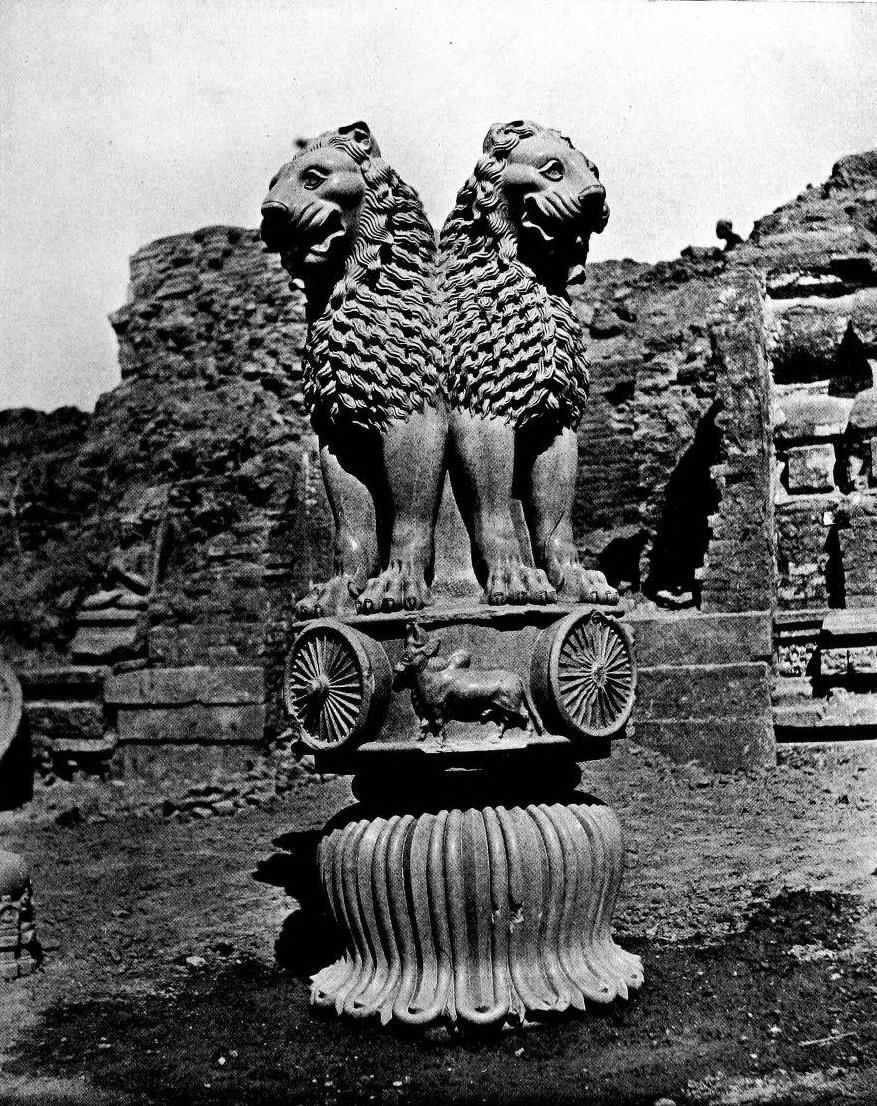Humanities/Arts Exam > Humanities/Arts Notes > Fine Art for Class 11 > Important Points: Arts of the Mauryan Period
Important Points: Arts of the Mauryan Period | Fine Art for Class 11 - Humanities/Arts PDF Download
1. Religious and Social Movements:
- Sixth century BCE marked the beginning of Buddhism and Jainism in the Gangetic valley.
- Both religions opposed the varna and jati systems of Hinduism.
- Magadha emerged as a powerful kingdom, later consolidated by the Mauryas.
- Ashoka patronised the Buddhist shraman tradition.
2. Religious Practices:
- Multiple forms of worship existed, including Yaksha and mother-goddess worship.
- Yaksha worship was prevalent before and after the advent of Buddhism and Jainism.
3. Architectural Developments:
- Construction of stupas, viharas, stone pillars, rock-cut caves, and monumental sculptures.
- Mauryan pillars are rock-cut and feature capital figures like bull, lion, elephant.
4. Mauryan Pillar Capitals:
- The Lion Capital at Sarnath is a notable example, symbolising Dhammachakrapravartana (Buddha's first sermon).
- Pillar capitals often decorated with stylised lotuses.

5. Monumental Images:
- Yaksha and Yakshini statues found at various locations, showing sensitivity towards depicting the human physique.
- Example: Yakshi figure from Didarganj, Patna.
6. Rock-cut Architecture:
- Example: Lomus Rishi cave at Barabar hills, with a semicircular chaitya arch and high relief carvings.
7. Buddhist Structures:
- Stupas and viharas constructed over Buddha's relics at various locations.
- Example: Great Stupa at Sanchi built during Ashoka's time.
8. Patronage and Inscriptions:
- Stupas often had inscriptions mentioning donors, ranging from lay devotees to kings and guilds.
- Artisans like stone carvers, goldsmiths, stone-polishers, and carpenters are mentioned in inscriptions.
9. Sculptural Tradition:
- Lion Capital at Sarnath, with four lions and depictions of chakra (wheel) and animals, adopted as the National Emblem of India.
10. Yakshini Sculpture:
- Life-size Yakshini holding a chauri from Didarganj, showing sophistication in form and medium.
11. Buddhist Art:
- Early depictions of Buddha were symbolic: footprints, stupas, lotus throne, chakra.
- Narrative art included Jataka stories and events from Buddha's life, like birth, renunciation, enlightenment, dhammachakrapravartana, and mahaparinibbana.
The document Important Points: Arts of the Mauryan Period | Fine Art for Class 11 - Humanities/Arts is a part of the Humanities/Arts Course Fine Art for Class 11.
All you need of Humanities/Arts at this link: Humanities/Arts
|
10 videos|24 docs|16 tests
|
FAQs on Important Points: Arts of the Mauryan Period - Fine Art for Class 11 - Humanities/Arts
| 1. What are some key characteristics of the arts during the Mauryan Period? |  |
Ans. The arts during the Mauryan Period were known for their realistic representation of human figures, use of stone as a prominent medium, and emphasis on symbolism and grandeur in architecture.
| 2. How did the Mauryan rulers contribute to the development of arts during their reign? |  |
Ans. The Mauryan rulers, particularly Ashoka, played a significant role in promoting arts by commissioning pillars and rock-cut caves with inscriptions, sponsoring the construction of stupas, and supporting various art forms.
| 3. What are some famous examples of Mauryan art that have survived to the present day? |  |
Ans. Some famous examples of Mauryan art that have survived include the Ashoka Pillars at Sarnath and Vaishali, the Great Stupa at Sanchi, and the Lion Capital of Ashoka, which is now the national emblem of India.
| 4. How did the Mauryan art reflect the socio-religious beliefs of the period? |  |
Ans. Mauryan art often depicted Buddhist themes, such as the life of Buddha, Jataka tales, and scenes from the life of Ashoka, reflecting the strong influence of Buddhism during that time.
| 5. What impact did the Mauryan art have on the subsequent artistic developments in India? |  |
Ans. The Mauryan art laid the foundation for the development of various art forms in India, such as Gandhara and Mathura schools of art, which further flourished during the later periods.
Related Searches
















